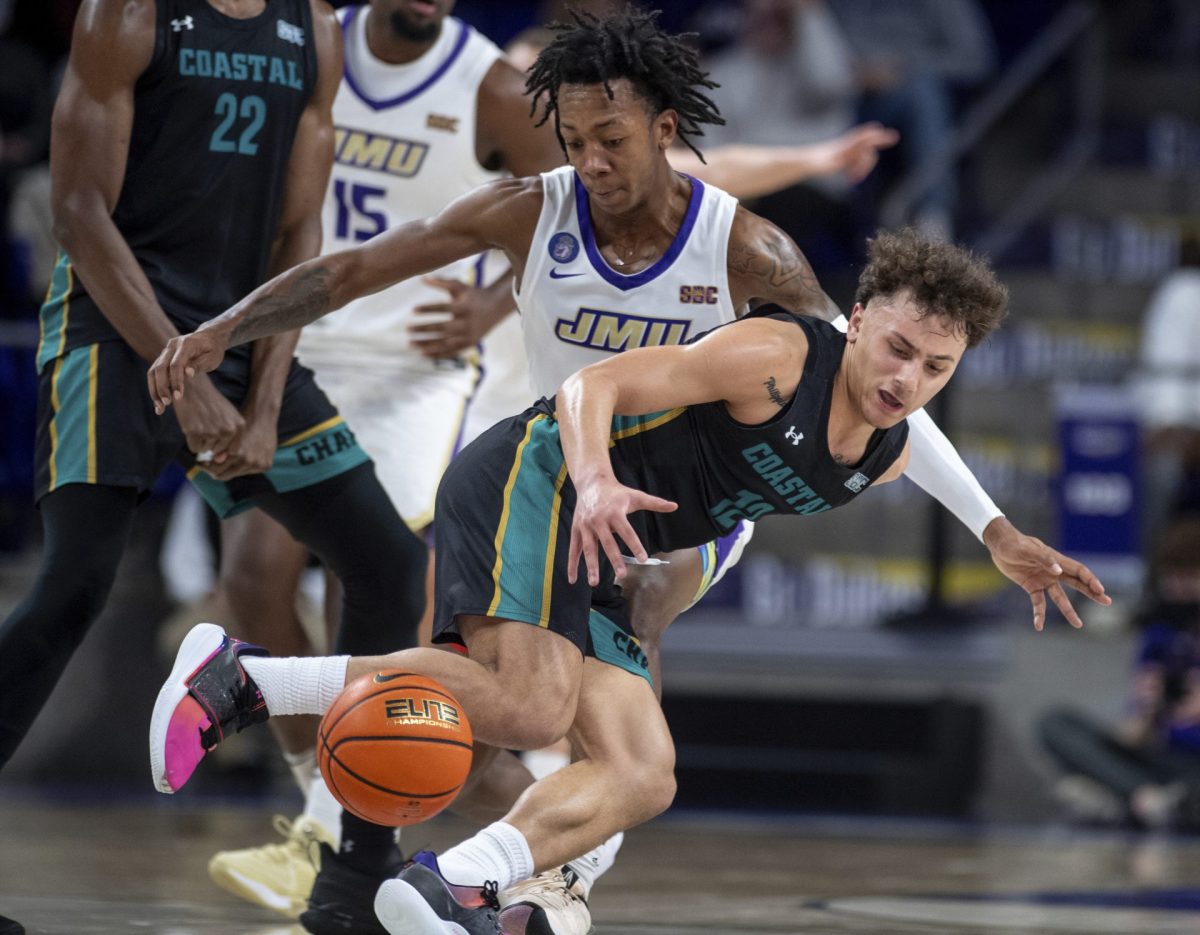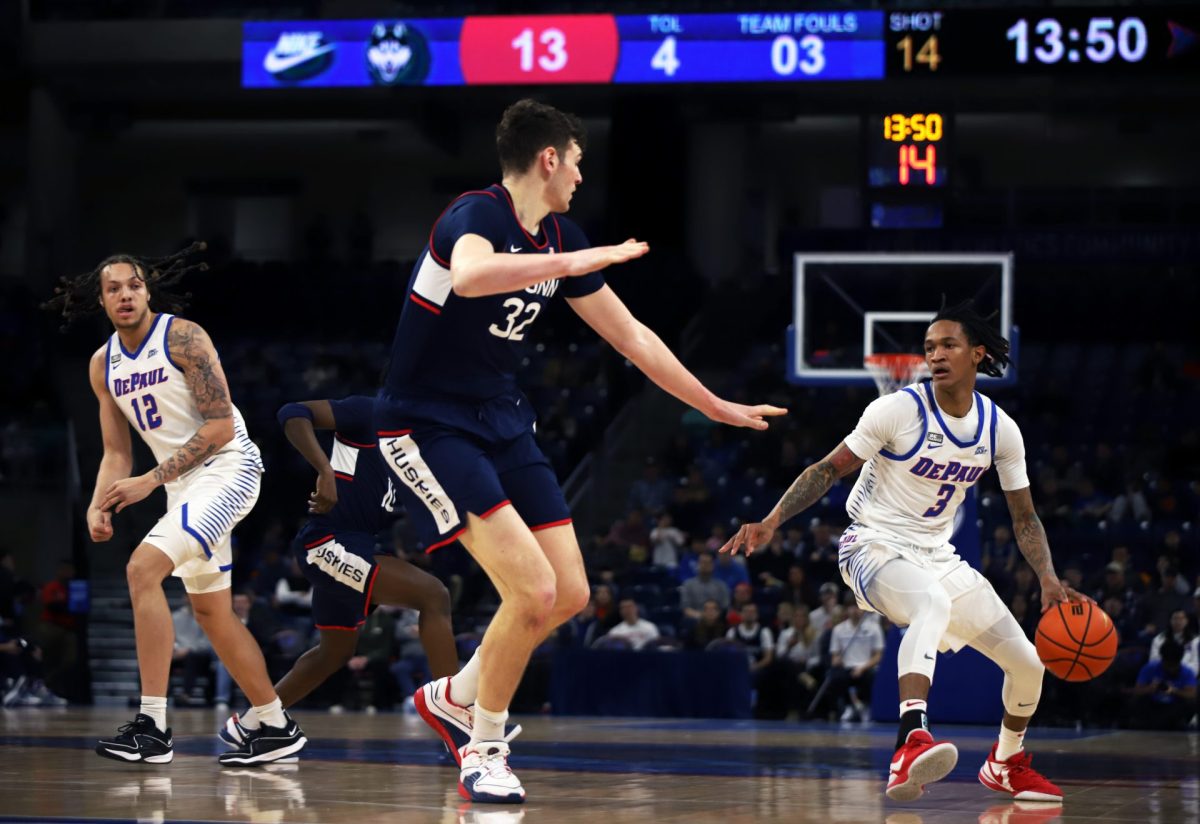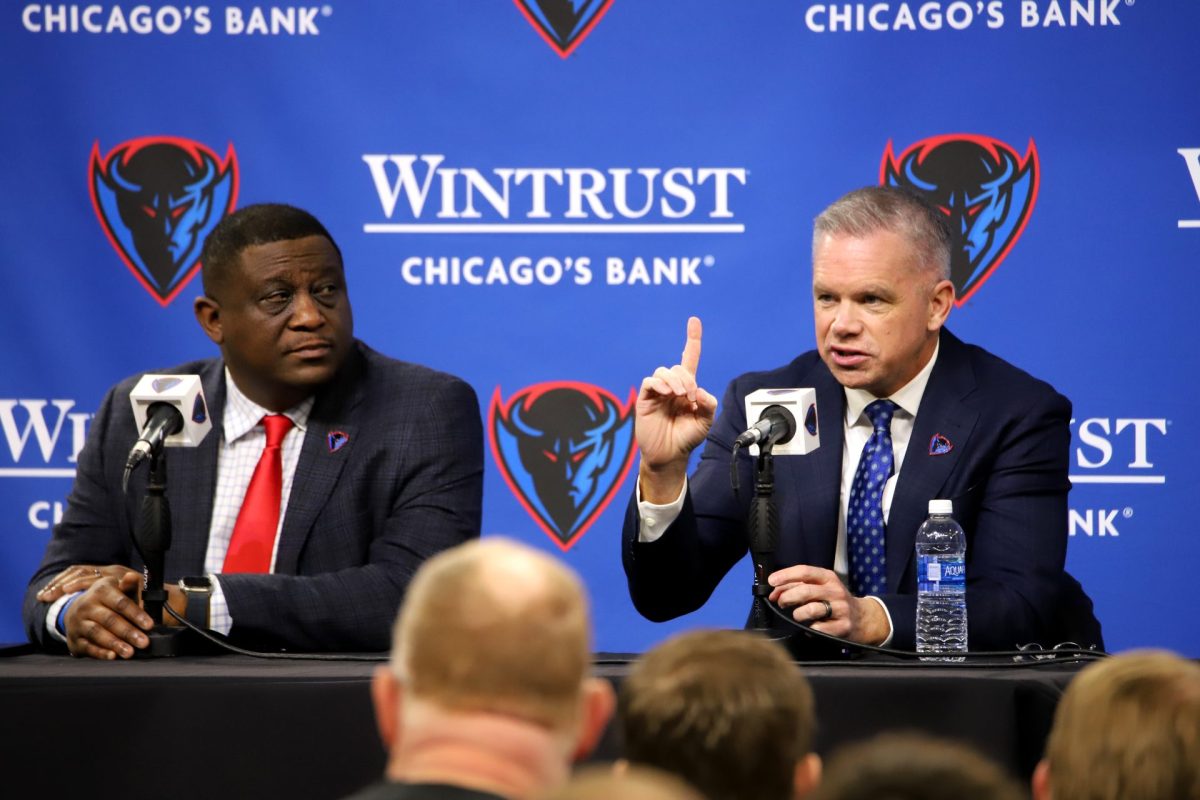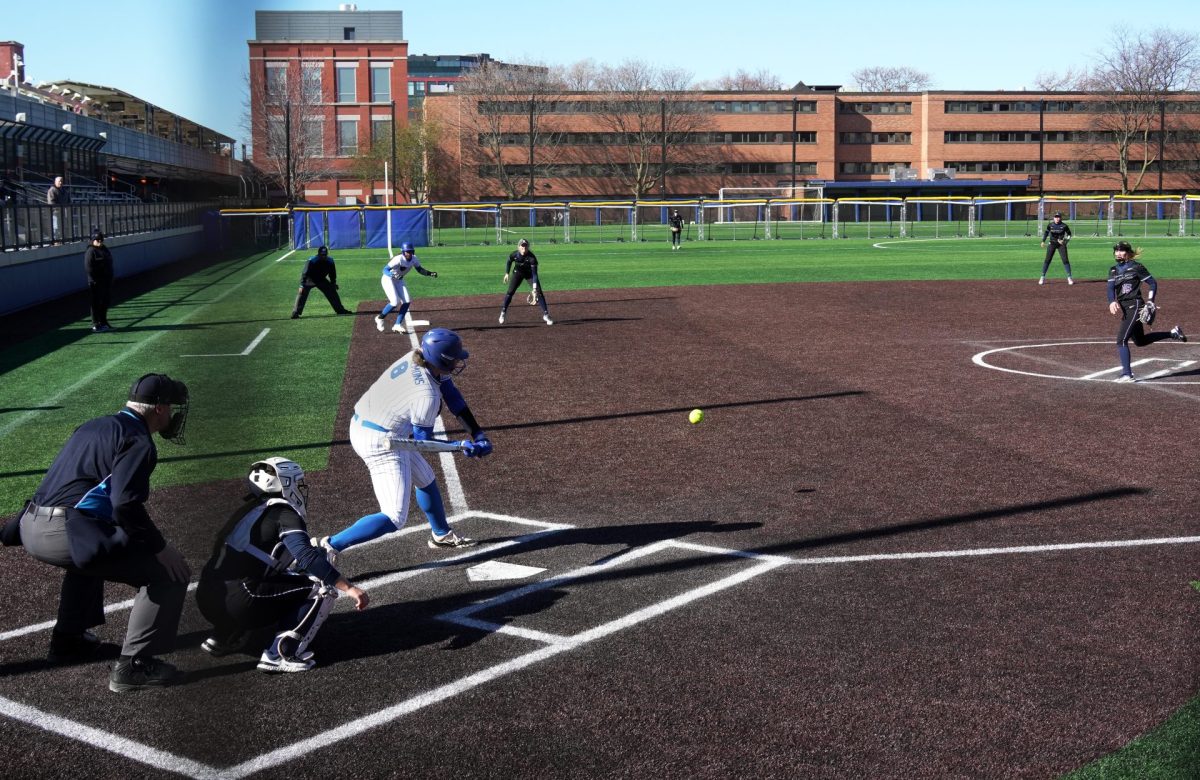One pitch is among the largest of all MLS clubs. The other pitch just squeaks by NCAA regulations. One pitch is natural grass, super soft and a luscious green. The other pitch is artificial.
The men’s soccer team got the opportunity to play on a pro pitch on Sept. 1 against UIC at Toyota Park, but it’s an experience they didn’t let go to their heads.
“It’s definitely the nicest place I’ve ever played,” said senior defender/midfielder Matt Leinauer. “I got to feel like a pro for a day in a big stadium and locker room. It was nice and felt good.”
That thought was echoed by many of the players, but sophomore midfielder Ray De Leon said the team blocked that thought while playing.
“Although it’s a pro stadium, we try not to look at it like that,” De Leon said. “We try to look at it as if it were a large, open training session with a lot fans.”
The Blue Demons fell 0-2 to UIC on the Thursday evening clash at the home of the Chicago Fire, and the difference between the playing surface at Toyota Park and Wish Field is more than meets the eye.
For starters, Toyota Park is natural grass – bluegrass, to be specific. The bluegrass at Toyota Park is about 5/8th of an inch long and is the original turf that was installed in 2006, the only exception being a resodding of the goal at the South end of the stadium, Toyota Park Turf Manager Eric Adkins told the Fire’s in-house “Touchline TV.” Any small damages to the turf are filled with sand, keeping the pitch soft.
The pitch at Toyota Park also features a state-of-the-art heating and draining system, which also keeps the pitch soft during each end of the MLS season (March-October).
Wish Field, on the other hand, has an artificial surface called FieldTurf, which has a tray system that allows Wish Field to be converted to Cacciatore Stadium for softball. FieldTurf consists of three elements: the fiber, the infill, and the backing.
The fiber is composed of monofilament polyethylene fibers that mimic the size, shape, and color of natural grass.
The infill, acting as a cushion, consists of silica sand and cryogenic rubber made from recycled rubber tires that have been cryogenically frozen and cut into small granules, according to FieldTurf’s website. The bottommost layer of FieldTurf’s infill is silica sand, which accounts for about 70 percent of the infill’s total weight. The next layer is a mixture of silica sand and cryogenic rubber in the middle of the infill, which helps keep suspension. Finally, the top layer consists of larger-sized rubber granules that ensure the athlete is playing on the rubber.
The backing serves as a holder for all the material. Made from a combination of permeable woven and non-woven polypropylene fabrics, the backing is where the fibers are sewn into and spaced in such a way so that athletes play on the cushion and not the fibers.
Although artificial turf has come a long way, most footballers still prefer natural grass, De Leon said.
“Any player preferably wants to play on grass, but we don’t have that here,” he said. “Playing on grass was such a luxury for one day.”
But beyond the type of surface, Toyota Park is different from Wish Field in one noticeable way: size.
Toyota Park is 75 yards wide by 120 yards long–the length of which is the maximum allowed for international matches per The Laws of the Game, but what the NCAA rulebook calls the “optimum size.”
Wish Field is 70 yards wide by 115 yards long. Since September 1995, these are the minimum dimensions set out by the NCAA.
Although slightly shorter and narrower in comparison, when factoring in the square yardage, Wish Field is actually 950 square yards smaller than the pitch at Toyota Park, which can add fatigue and a shift in playing style caused by the large amount of space.
However, Leinauer said the size of the pitch doesn’t matter to the Blue Demons.
“We don’t adjust our game plan based on a field we’re playing on,” he said. “We’re going to stick to our game plan and our style of play no matter what.”







